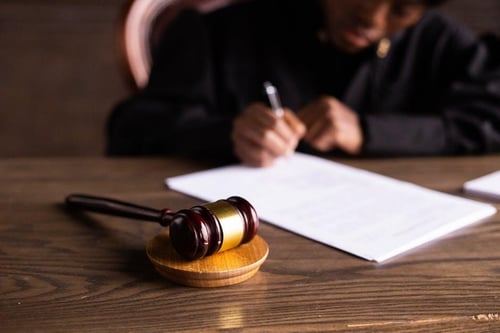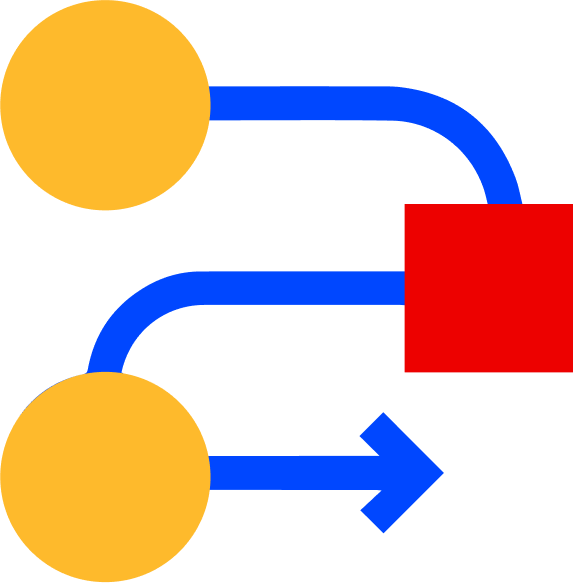Navigating the Legal Hold Process Under GDPR and EMEA Data Privacy Laws


A legal hold process is a mandatory preservation mechanism that ensures relevant data retention when litigation or regulatory inquiry is anticipated, and under GDPR frameworks, it must also respect individuals' rights while meeting corporate obligations. In the EMEA region, organizations must balance data preservation under GDPR with local privacy laws and cross-border constraints to maintain GDPR legal compliance.
Have you ever wondered how data subject rights and retention limits interact when a legal claim is on the horizon? Today, we're taking a closer look at how the legal hold process works under GDPR and EMEA data regulations, the key regulatory principles behind it, and more.
What Are the 7 Main Principles of GDPR?
The General Data Protection Regulation, or GDPR, utilizes seven principles that guide how to properly handle personal data. These principles form the foundation of data privacy compliance and help organizations manage data preservation under GDPR. There are seven main principles to understand:
- Lawfulness, fairness, and transparency
- Purpose limitation
- Data minimization
- Accuracy
- Storage limitation
- Integrity and confidentiality
- Accountability
Lawfulness, fairness, and transparency mean that organizations must collect and use personal data in an open, honest, and legal way. Purpose limitation requires that the collection of data only for clear and specific reasons, and once that reason is fulfilled, it shouldn't be used for anything new.
Data minimization reminds companies to gather only what's necessary to perform their task, while accuracy demands that information remain correct and up to date. Storage limitation means data isn't kept longer than needed, and integrity and confidentiality require strong protections against loss, misuse, or unauthorized access.
Finally, accountability ties all these together by requiring companies to prove they follow every principle through documented processes and responsible management.
Together, these seven principles create the foundation for lawful and transparent data handling under EMEA privacy regulations. They shape how organizations design systems, train employees, and build trust through responsible GDPR legal compliance.
What Happens if You Violate GDPR?
Violating GDPR can create serious financial and legal problems for any organization that handles personal data in the EMEA region. Three main outcomes often follow a violation:
- Financial penalties and fines
- Reputational and operational damage
- Cross-border legal challenges
Financial Penalties and Fines
GDPR allows regulators to issue significant fines when organizations break the law. These penalties can reach up to 20 million euros or 4 percent of a company's annual global revenue, whichever is higher.
Even small violations, such as late reporting or improper consent handling, can result in fines. Companies must follow GDPR legal requirements at every step to reduce risk.
Reputational and Operational Damage
Beyond money, a violation can damage trust. Customers may lose confidence when their information is mishandled.
Business partners may hesitate to work with a company that fails to protect data. Investigations can also interrupt normal operations, which increases costs and delays.
Cross-Border Legal Challenges
For multinational companies, penalties may come from more than one authority. Cross-border legal hold issues can arise when data flows between regions.
It makes cooperation between legal, privacy, and compliance teams even more important. Meeting both GDPR and EMEA data regulations helps reduce confusion and supports consistent accountability across countries.
Understanding the Legal Hold Process
A legal hold begins when a company becomes aware of potential:
- Litigation
- Investigation
- Dispute
Legal teams must identify which data, employees, and systems are affected.
This step often involves coordination between legal, compliance, and IT departments. Clear communication helps reduce confusion and supports consistent data preservation under GDPR.
Once data is identified, employees receive written notice to preserve it. The notice explains the retention of information. Employees must acknowledge the notice to confirm their understanding.
Monitoring and Preservation
During the hold, the organization must make sure data isn't deleted or changed. IT systems may restrict automatic deletion settings or limit access to certain files. Regular audits help confirm that all relevant data remains protected. Strong internal monitoring reduces the risk of data loss and legal hold challenges.
When the case or investigation ends, the hold is lifted. The release must be documented, and normal retention policies can resume.
Frequently Asked Questions
How Does a Legal Hold Affect Cloud-Based Data in EMEA?
Cloud storage adds new layers of responsibility under GDPR legal compliance. When a company places a legal hold, it must work with cloud providers to pause any automated deletion or movement of data.
Information storage in multiple regions can be complex. Some EMEA privacy regulations require that data stay within specific jurisdictions, which can limit where and how it's stored. Businesses should confirm that their cloud vendors can support data preservation under GDPR and maintain access controls during the legal hold process.
What Are Common Legal Hold Challenges for Multinational Corporations?
Large organizations often face issues with communication, inconsistent procedures, and regional differences in privacy laws. Teams across several countries may follow separate data practices that don't align with GDPR legal requirements.
Cross-border legal hold situations can create delays or loss of records if systems don't sync properly. Companies can address this by setting global legal hold policies that respect local privacy laws and by using technology that tracks compliance across all regions.
How Long Should Data Preservation be Under a Legal Hold?
There's no fixed time limit under GDPR or EMEA data regulations. Data retention must happen until the legal matter is resolved and the hold is officially lifted. Standard retention schedules pause during this period.
Once the hold ends, data should either return to normal retention rules or be subject to deletion if it's no longer required. The process must be documented to show accountability under GDPR legal requirements.
Successful Data Privacy Compliance
The legal hold process under GDPR and EMEA privacy regulations protects both compliance and accountability.
At Onna, we help organizations turn scattered workplace data into a secure, strategic asset. Our platform connects to tools like Slack, Google, Microsoft, and Confluence to collect, process, and manage information at scale. With no-code integrations, advanced search, and full metadata extraction, we simplify data governance, strengthen compliance, and support faster, smarter legal discovery.
Get in touch today to find out how we can help with your legal hold process.
 eDiscovery
eDiscovery Collections
Collections Processing
Processing Early Case Assessment
Early Case Assessment Information Governance
Information Governance Data Migration
Data Migration Data Archiving
Data Archiving Platform Services
Platform Services Connectors
Connectors Platform API
Platform API Pricing Plans
Pricing Plans Professional Services
Professional Services Technical Support
Technical Support Partnerships
Partnerships About us
About us Careers
Careers Newsroom
Newsroom Reveal
Reveal Logikcull by Reveal
Logikcull by Reveal Events
Events Webinars
Webinars OnnAcademy
OnnAcademy Blog
Blog Content Library
Content Library Trust Center
Trust Center Developer Hub
Developer Hub